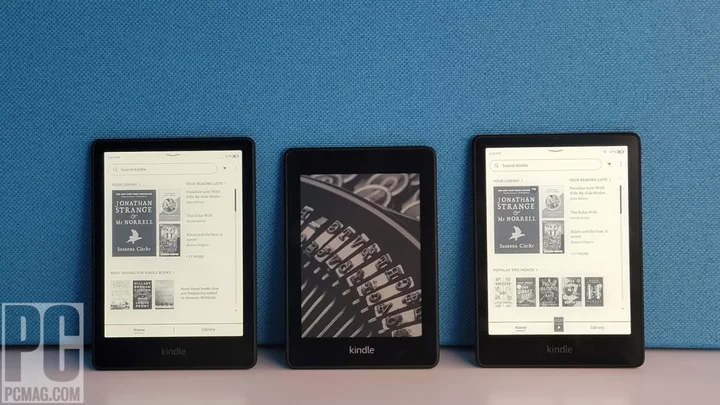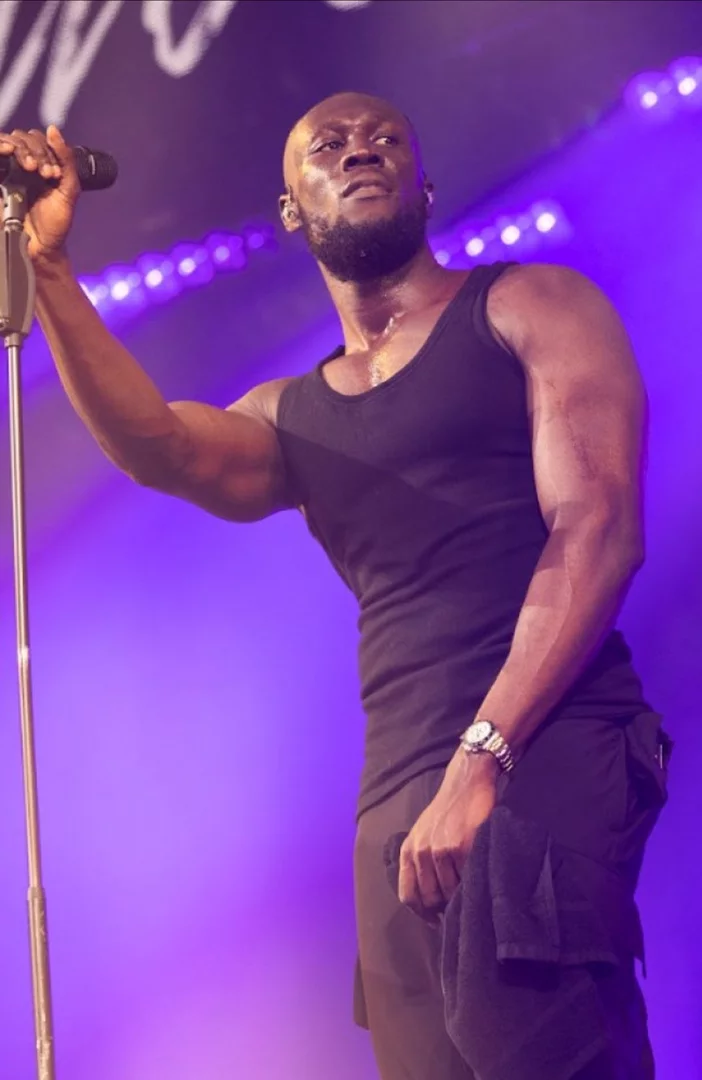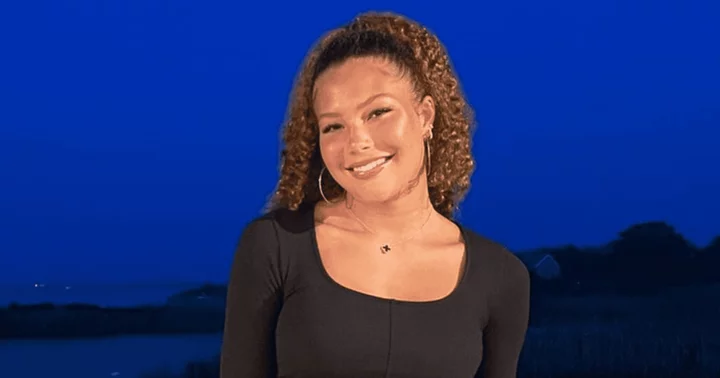Step away from the monitor and give your eyes a rest. Ebook readers, also called ereaders, rely on E Ink screens that let you read for long periods without the brain burn from a radiant LCD or OLED screen. They have long battery life and look terrific in sunlight. Amazon's Kindles dominate the ebook reader market in the US, but if you're shopping around, it's a good idea to also look at models from Kobo, Nook, and Onyx.
Here are the best ebook readers we've tested, followed by everything you need to know before deciding which one is right for you.
What's the Best eReader Screen Type and Size?
Basic ebook readers use monochrome E Ink screens to display text. E Ink, or digital ink (often manufactured by the E Ink company), looks a lot like paper, but it's easier on your eyes for reading over long periods than text on a traditional digital display. More affordable models don't have backlights, however, so you might need a light to see the text, just as you would with a printed book. But most ebook readers now include edge lighting that lets your read in the dark. You can often change the brightness level from barely there to flashlight-bright. On the lowest settings, you can read in the dark while your partner sleeps undisturbed next to you.
In all cases, E Ink is much easier to read in bright sunlight, while glossy color touch screens on tablets tend to wash out and show distracting reflections.
Most E Ink readers in the past had 6-inch screens, but the panel sizes are slowly growing: The Amazon Kindle Paperwhite and the Kobo Libra 2 have 7-inch displays, the Kindle Scribe and Kobo Elipsa 2E have 10.2-inch screens, and Onyx sells larger-format models up to 13.3 inches. We've found that you start to have balance issues with one-handed reading at a screen size above 7 inches.
Screen resolutions and quality also vary. Some older Kindles use 167ppi displays that look rough and jaggy compared with the 300ppi displays on more modern models. Amazon and Kobo's latest readers go one step further with Carta 1200 technology, which enables faster page turns and even better contrast.
Barnes & Noble Nook GlowLight 4 (Credit: Sascha Segan)If you haven't updated your ebook reader in many years, you might be stunned by how much more responsive the latest E Ink readers feel. Frequent, startling screen flashes are really a thing of the past.
The Best Color eReaders
If you need to read more than books, tablets with color screens offer many other benefits. Magazines and comic books look great on larger tablets. Even lower-cost tablets like the Amazon Fire 7 let you browse the web, stream video from Netflix, Hulu, and others, play music, and run apps. Because of its high-quality screen and general power, however, we recommend the base-model iPad for most people trying to read rich, full-page color content.
In 2020, we saw a breakthrough in color E Ink displays, with several readers implementing the E Ink Kaleido or E Ink Kaleido Plus technologies. We've tested two of them, the Onyx Boox Nova3 Color (which is no longer for sale) and the PocketBook InkPad Color, which show some of the exciting possibilities of color E Ink. Unfortunately, we can't recommend them yet; the screen technology is relatively dim, with low full-color resolution and occasional ghosting. LCD tablets are far superior and there haven't been many developments in color E Ink displays since then.
The Best eReaders for the Beach
If you like reading in the bath, by the pool, or on the beach, consider a waterproof ebook reader. Options include the Amazon Kindle Paperwhite, the Kobo Libra 2, and the Kobo Clara 2E, all of which can withstand some amount of submersion in water. Other readers aren't quite as resilient.
The Best eReaders for Taking Notes
All ebook readers let you highlight or tag particular phrases for later reference. Some have digital pens that let you take notes directly on the screen. The Remarkable tablet line, the Kindle Scribe, Kobo Elipsa 2E, many Onyx Boox tablets, and the iPad line all support pen input. In general, they let you annotate on PDFs and other kinds of documents, plus take freehand notes on a blank page. The Kobo Elipsa 2E is our favorite E Ink tablet for pen use because of its strong document format support. The Scribe feels similarly good to write on, but Amazon's Kindle ecosystem requires more effort to get the most out of some document formats.
Amazon Kindle Scribe (Credit: Will Greenwald)The Remarkable 2 has a passionate following and is the best tablet for taking notes. However, it isn't a good ebook reader because it supports only PDF and EPUB format books. That means that books from public libraries and many online bookstores are not an option.
The Best eReaders for Audiobooks
Sometimes you'd rather listen than read. Sometimes you'd like to read and listen at the same time. Kindles can now connect to Bluetooth headphones to play Audible audiobooks, and many Amazon books can synchronize with Audible audiobooks on Kindle ebook readers. Kobo uses a proprietary audiobook format, for comparison.
Oddly, Amazon saves its slickest audiobook feature, Immersion Reading, for its Android app. That feature synchronizes words that appear on the page with those you hear aloud.
Where Can You Get Ebooks?
The ebook reader you choose determines which ecosystem you can use.
Amazon, Barnes & Noble, and Kobo all use copy protection on most of their books, which prevents you from reading titles on other brands' ebook readers. Removing the copy protection is possible, but you might also remove features such as formatting and character summaries in the process. It's also gotten much harder to strip the protection specifically from Amazon books in recent years.
Amazon Kindle Paperwhite (Credit: Sascha Segan)Amazon's Kindle Unlimited offers more than three million ebooks for $9.99 per month. Amazon Prime subscribers can access a smaller library as part of Prime Reading without paying extra. For kids, the Amazon Kids+ subscription service unlocks a lot of children's books and starts at $2.99 per month. You get a free year of it when you buy the Kindle Kids Edition.
For public library lending, Kobo readers let you use the popular library app Overdrive as a native store, which is convenient. Amazon sends you through the library's website to pick books that push to your device.
Book selection, size, and pricing vary from store to store. Books by big publishers generally appear in the Amazon, Barnes & Noble, and Kobo stores. But Amazon also has exclusive authors and imprints. Many of them are self-published and not very good, but Amazon definitely has the advantage in quantity.
For more, see our article on how to put free ebooks on your Amazon Kindle. And for an in-depth comparison of supported formats across various ebook readers, check out Wikipedia's article comparing ebook formats.
How Much Should You Spend on an eReader?
If you're reading mainstream fiction or nonfiction books, the sweet spot right now is $100 to $150 for a good 6- or 7-inch Amazon or Kobo device. You can get a low-end model that costs less or a larger model that costs more, but ebook readers at this price point tend to strike the best balance between screen quality and size.
Onyx's tablet-sized readers cost considerably more than other ebook readers. Still, they're also much more powerful, letting you run multiple reading apps, annotate PDFs, and read large-format documents on big screens. We see these primarily for academics, lawyers, and doctors. The Kindle Scribe is much more accessible and less expensive (though still much pricier than the Kindle Paperwhite), but it has fewer features.
If you're getting a Kindle, check out our Amazon Kindle tips every reader needs to know. And if you'd rather do your reading on a bigger screen or one with color, head over to our top tablet picks.









